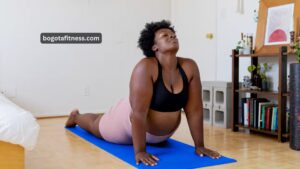One technique to help you relax your body and let go of worried thoughts before bed is guided sleep meditation. This meditation technique involves shifting your attention from ideas to bodily sensations, just like other types of meditation.
To put it simply, guided sleep meditation is practicing meditation prior to going to sleep, usually while lying in bed. Although you can do sleep meditation on your own, guided sleep meditation often entails listening to an audio recording that walks you through the steps of the technique.
Reducing the negative effects of anxious thoughts and physical strain on your sleep is the aim of guided sleep meditation. Your ability to fall and stay asleep will start to improve if you can learn to change your concentration and relax your body.
Consistently engaging in guided sleep meditation has been demonstrated to enhance sleep quality, making it a valuable tactic to assist lessen difficulty falling and staying asleep.
What the Research Says
The American Sleep Association estimates that 10% of adults experience persistent issues falling and/or staying asleep, whereas 30% of adults experience short-term insomnia.1. Furthermore, around one-third of adults say they usually sleep for less than seven hours per night.
Considering that teens require even more sleep—eight to ten hours—than adults, who require seven to nine hours to function at their optimum, it’s not surprise that techniques for enhancing sleep quality are gaining popularity.
A 2015 study with 49 older persons revealed that mindfulness meditation was superior to a sleep hygiene intervention for enhancing sleep. The study was published in JAMA. The mindful awareness practice (MAP) intervention was implemented twice a week for a total of six weeks.
Additionally, it was discovered that the benefits of sleep extended to problems during the day, such as decreased depression and exhaustion. This tiny preliminary study indicates that guided sleep meditation may be more beneficial than sleep hygiene routines alone (e.g., avoiding electronics just before bed, going to bed at a specific time every night).
Benefits of Meditation for Sleep
You can learn to relax in the here and now through meditation. It’s likely that you start to concentrate on the ideas you repressed during the day when you rest your head on the pillow at night. Without any external distractions, it might be challenging to rein in stray thoughts that could cause despair and worry.

You may relax and let go of your racing thoughts by practicing guided sleep meditation. Your parasympathetic nervous system is then triggered, which aids in reducing your heart rate and respiration rate.
It’s crucial to understand that the goal of guided sleep meditation is not to make you fall asleep. The goal of the exercise is to quiet your mind and relax your body; sleep should be a bonus.
Since obtaining adequate sleep at night affects how you feel during the day, you should also see benefits from guided sleep practice during the day.
During the best guided sleep meditations, you will be guided by an audio guide that you may listen on a small speaker next to your bed or on headphones. The idea is to allow the voice on the tape guide you instead of forcing you to think too hard about what you are doing.
These modifications get you ready for sleep, and you might even discover that you nod off in the middle of your meditation session.
It should get simpler with practice to enter the meditation and adhere to the instructions. Therefore, if you initially find that you are unable to relax or calm down while practicing meditation, don’t quit up too soon.
How to Practice Guided Meditation for Sleep
Various forms of sleep meditations are available, based on your preferred method of relaxing after a busy day. The methods listed below can be included into popular sleep meditations. Try these five sleep meditations and receive some advice on how to make the most of your time in bed.

During a normal guided sleep meditation, you will be instructed to “body scan,” or shift your focus from your anxious thoughts to your body. In order to do this, you must shift your focus from your ideas to your body’s feelings and observe them without attempting to alter them.
Also Read: MINDFULNESS STRATEGIES FOR STRESS RELIEF
You will go from your head to your toes during the meditation, focusing on the various parts of your body and noting sensations like tightness, tingling, temperature, and heaviness. You will be instructed to breathe into each body area as you go through it to gradually relax and remove tension.
Breathing Exercises
Breathing exercises are another technique used in guided sleep meditation, in addition to the body scan.
To help your body slow down and communicate that it is time for bed, you may be advised to count while you inhale and exhale, for example.
Visualization
By using visualization, you might help yourself go into a trance-like condition that is akin to what is experienced during hypnosis by picturing a serene landscape.
Additionally, you will be instructed to let any and all ideas, including the ones that are troubling you, pass by you like leaves drifting down a river or clouds floating in the sky. Your body will begin to soften and relax as a result, and your breathing will deepen.
Gratitude
In a gratitude-focused sleep meditation, you would practice focusing on being kind, patient, and appreciative to yourself. A gratitude meditation is an excellent method to take stock of your day and consider the things that went well for you as well as the lessons you were able to gain from your setbacks.
Grounding
A grounding meditation, like most meditations, will concentrate on your capacity to bring yourself back to the present moment by paying prolonged attention to it.
Poetry is incorporated into the meditation above, so we can practice mindfulness just by paying attention to the words being spoken and using them as cues to focus our thoughts.
Tips to Improve Sleep Hygiene
In addition to guided sleep meditation, you can apply the following basic sleep hygiene techniques:
- In the final hour before going to bed, try not to use blue-light producing equipment like computers and cell phones.
- Make a conscious decision to go to bed and wake up at the same times every day.
- Invest in a photochromic light to assist you wake up at a specific time.
- In the event that you must go to bed at unusual hours, use dark blinds to make your room gloomy.
- To improve your quality of sleep, keep the temperature in your room lower.
- Reduce the amount of sounds in your bedroom except white noise.
- Six to eight glasses of water should be consumed daily.
- Engage in regular exercise, such as yoga or walking.
- Put on airy, cozy pajamas made of cotton.
- Before going to bed, write in a thankfulness diary.
Reduced stress and a stronger immune system are two benefits of getting more sleep. But if you are struggling with stress and worry, it might be difficult to get a good night’s sleep because it can be difficult to quiet your mind. Your nighttime thought processes are often the source of many sleep-related problems. Herein lies the benefit of guided sleep meditation.
To promote restful sleep, make sure you follow proper sleep hygiene in addition to engaging in meditation. Traditional treatments like cognitive-behavioral therapy or medication may be beneficial if anxiety still bothers you at night.




